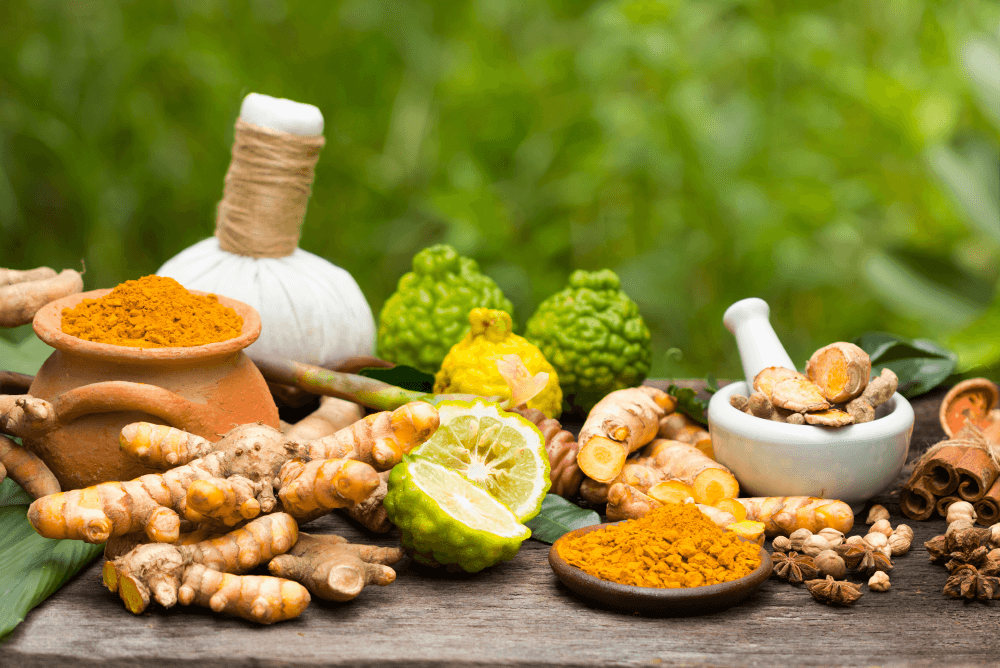Introduction
Anaemia is a prevalent medical disorder that affects millions of people globally. It occurs when the body lacks sufficient healthy red blood cells or haemoglobin, the protein in red blood cells responsible for carrying oxygen to the body's tissues. This deficiency decreases oxygen delivery to the tissues, causing various illnesses ranging from fatigue and weakness to more severe health complications. Understanding the causes, types, risks, and dietary management is crucial for preventing and treating anaemia.
Causes of Anaemia
Anaemia can be caused by a variety of factors, broadly classified into three main categories:
1. Decreased Red Blood Cell Production
This occurs when the body does not produce enough red blood cells or haemoglobin due to:
- Nutritional Deficiencies: The most common cause is a deficiency in essential nutrients, particularly iron, vitamin B12, and folic acid, which are crucial for red blood cell production.
- Chronic Diseases: Conditions such as chronic kidney disease, cancer, or chronic inflammatory diseases can interfere with the production of red blood cells.
- Bone Marrow Disorders: Diseases like aplastic anaemia, leukaemia, or myelodysplastic syndromes affect the bone marrow's ability to produce red blood cells.
2. Increased Red Blood Cell Destruction
This occurs when red blood cells are destroyed quicker than they can be created, which is usually caused by:
- Hemolytic Anaemia: This is caused by autoimmune diseases, infections, or certain medications that lead to the premature destruction of red blood cells.
- Inherited Disorders: Conditions like sickle cell anaemia and thalassemia are genetic disorders that cause the body to produce abnormal haemoglobin, destroying red blood cells.
3. Blood Loss
Significant or chronic blood loss can lead to anaemia, as the body loses red blood cells faster than they can be replaced. This can be due to:
- Gastrointestinal Bleeding: Conditions like peptic ulcers, gastritis, or colorectal cancer can cause internal bleeding.
- Heavy Menstrual Periods: Women with menorrhagia (excessive menstrual bleeding) are at risk of developing anaemia.
- Trauma or Surgery: Severe injuries or surgical procedures can result in significant blood loss.
Types of Anaemia
Anaemia can be classified into several types based on its underlying causes:
1. Iron-Deficiency Anaemia
The most common type of anaemia is caused by a lack of iron in the diet or poor absorption of iron in the body. Iron is essential for producing haemoglobin, and its deficiency leads to reduced oxygen-carrying capacity of the blood.
2. Vitamin B12 Deficiency Anaemia
Also known as pernicious anaemia, this type is caused by insufficient vitamin B12 intake or absorption. Vitamin B12 is essential for producing red blood cells and maintaining neurological function.
3. Folate-Deficiency Anaemia
Folate (vitamin B9) is another component required for red blood cell formation. Folate deficiency can lead to megaloblastic anaemia, where red blood cells are larger than normal and not fully developed.
4. Aplastic Anaemia
It is a rare but serious condition where the bone marrow fails to produce enough red blood cells, white blood cells, and platelets. It can be caused by autoimmune diseases, certain medications, or exposure to toxic chemicals.
5. Hemolytic Anaemia
This type happens when red blood cells are damaged more quickly than they can be created. It can be inherited (e.g., sickle cell anaemia) or acquired due to infections, autoimmune diseases, or certain medications.
6. Sickle Cell Anaemia
A genetic disorder where the body produces abnormal haemoglobin, causing red blood cells to become rigid, sickle-shaped, and prone to breaking apart.
7. Thalassemia
Another inherited disorder where the body makes abnormal forms of haemoglobin, leading to the destruction of red blood cells and resulting in anaemia.
8. Anaemia of Chronic Disease
Chronic infections, inflammatory diseases, or cancers can interfere with the body's ability to use iron effectively, leading to anaemia.
Risks Associated with Anaemia
Anaemia can lead to several health risks and complications if left untreated:
1. Fatigue and Weakness
Fatigue and weakness are the most typical signs of anaemia. They result from the body's reduced ability to carry oxygen to tissues. This can affect daily activities and reduce the overall quality of life.
2. Heart Problems
Severe or chronic anaemia can lead to an increased heart rate and, eventually, heart failure. The heart works harder to pump more blood to compensate for the lack of oxygen.
3. Pregnancy Complications
Anaemia during pregnancy is linked to a higher risk of low birth weight, preterm birth, and maternal mortality. It can also affect the baby's development and increase the risk of postpartum depression in the mother.
4. Cognitive and Developmental Delays
Anaemia can lead to cognitive and developmental delays in children, affecting learning abilities and overall growth.
5. Compromised Immune System
Anaemia can impair the immune system, leaving the body more vulnerable to infections and disorders.
6. Complications from Chronic Disease
In individuals with chronic diseases, anaemia can worsen the underlying condition and increase the risk of complications, including organ damage.
Dietary Management of Anaemia
Diet plays a crucial role in the prevention and management of anaemia. Incorporating nutrient-rich foods into the diet can help improve red blood cell production and haemoglobin levels.
1. Iron-Rich Foods
Iron is a key component of haemoglobin, and increasing iron intake can help prevent and treat iron-deficiency anaemia. Dietary iron is divided into heme iron (animal source) and non-heme iron (plant source).
- Heme Iron Sources: These include red meat, poultry, fish, and organ meats like liver. Heme iron is absorbed better by the body than non-heme iron.
- Non-heme Iron Sources: These include legumes (lentils, beans, chickpeas), tofu, fortified cereals, spinach, kale, and other leafy green vegetables. Although non-heme iron is less easily absorbed, its absorption can be enhanced with vitamin C-rich foods.
2. Vitamin C-Rich Foods
The absorption of non-heme iron from plant sources is improved by vitamin C. Including vitamin C-rich foods in meals can significantly improve iron absorption.
- Sources of Vitamin C: Citrus fruits (oranges, grapefruits), strawberries, bell peppers, broccoli, tomatoes, and kiwi are excellent sources of vitamin C.
3. Folate-Rich Foods
Folate is essential for the production of red blood cells and DNA synthesis. A diet rich in folate can help prevent folate-deficiency anaemia.
- Sources of Folate: Leafy green vegetables (spinach, kale), legumes, nuts, seeds, citrus fruits, and fortified cereals are good sources of folate.
4. Vitamin B12-Rich Foods
Vitamin B12 is crucial for red blood cell production and nerve function. A vitamin B12 shortage can result in pernicious anaemia.
- Sources of Vitamin B12: Animal products such as meat, poultry, fish, eggs, and dairy are rich in vitamin B12. For vegetarians and vegans, fortified cereals, nutritional yeast, and B12 supplements can help meet the daily requirements.
5. Foods to Avoid
Certain foods and beverages can inhibit iron absorption and should be consumed in moderation, especially for individuals with anaemia.
- Tea and Coffee: These contain polyphenols and tannins that can reduce iron absorption. It is best to avoid consuming them with meals.
- Calcium-Rich Foods: While calcium is essential for bone health, it can interfere with iron absorption when consumed in large amounts. Dairy products should not be consumed with excess of iron-rich meals.
- Phytates: Phytates found in whole grains, legumes, and nuts can bind to iron and reduce its absorption. Soaking or fermenting these foods can help reduce phytate content.
Additional Tips for Managing Anaemia
1. Regular Monitoring
Individuals at risk of anaemia, such as pregnant women, young children, and those with chronic conditions, should have regular blood tests to monitor their haemoglobin levels and overall health.
2. Supplements
In cases where dietary changes alone are insufficient, iron, vitamin B12, or folate supplements may be prescribed by a healthcare provider. It is critical to adhere to the suggested dosage and duration.
3. Cooking Techniques
Cooking with cast iron cookware can increase the iron content of food, particularly when preparing acidic foods like tomatoes.
4. Balanced Diet
A well-balanced diet that includes a variety of nutrient-rich foods is essential for overall health and can help prevent deficiencies that lead to anaemia.
4. Consult a Healthcare Provider
If you suspect you have anaemia, it is important to consult a healthcare provider for a proper diagnosis and treatment plan. Self-diagnosis and treatment can lead to complications, especially if the anaemia is caused by an underlying condition.
Conclusion
Anaemia is a widespread condition that can have serious health consequences if left untreated. Understanding the causes, types, risks, and dietary management of anaemia is essential for preventing and managing this condition. A diet rich in iron, vitamin C, folate, and vitamin B12, along with regular monitoring and appropriate supplementation, can help maintain healthy haemoglobin levels and improve overall well-being. Early detection and treatment of anaemia are crucial, as addressing the condition promptly can prevent complications and enhance quality of life. By making informed dietary choices and consulting with healthcare professionals, individuals can effectively manage anaemia and support their body's ability to produce healthy red blood cells. Ultimately, a proactive approach to diet and health can significantly reduce the burden of anaemia, promoting better long-term outcomes and a healthier life.








